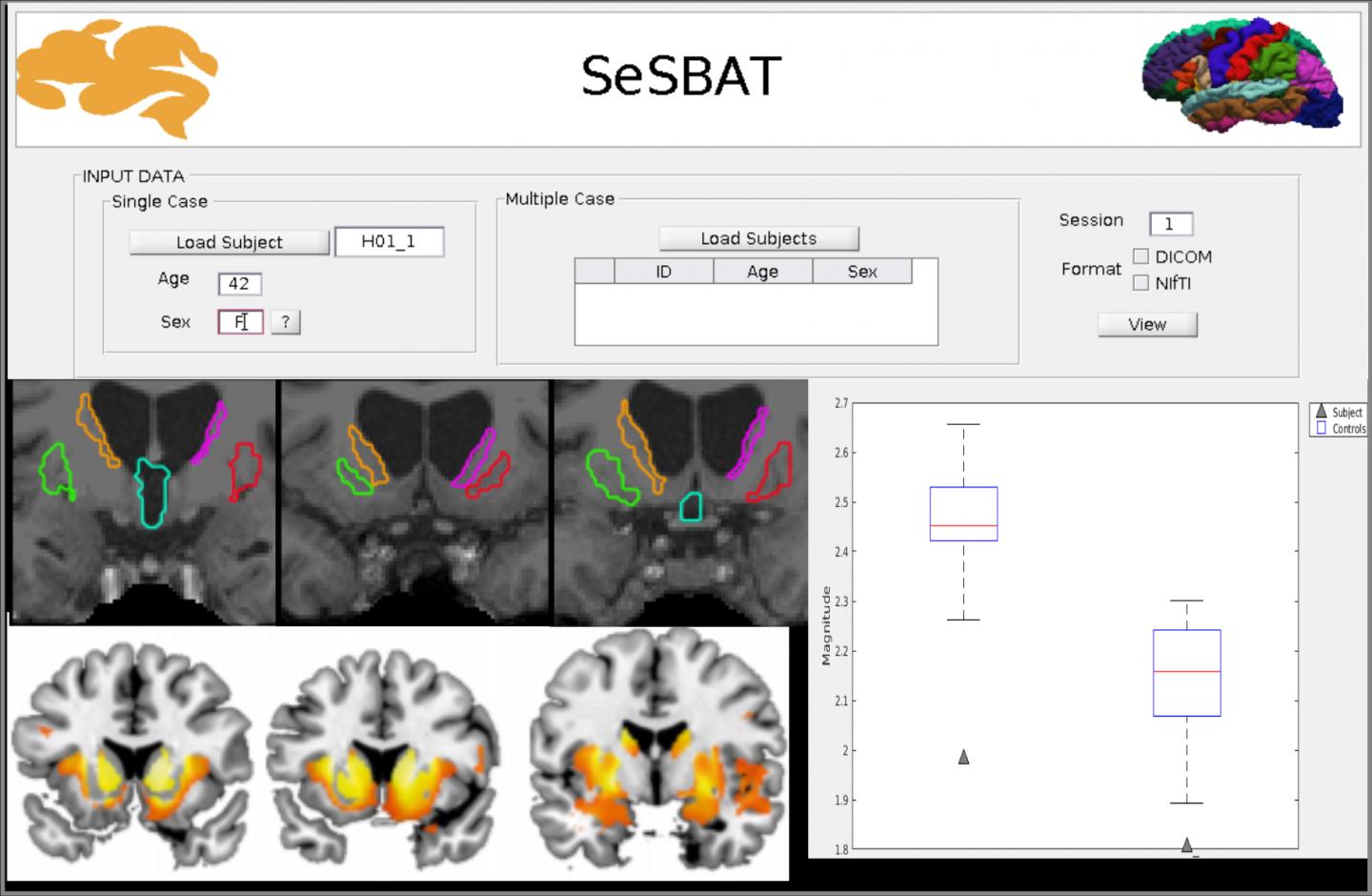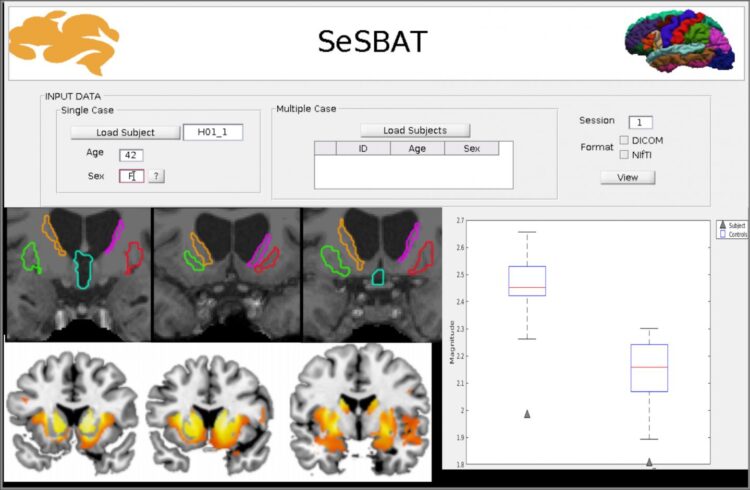
Credit: Bellvitge Biomedical Research Institute (IDIBELL)
Magnetic resonance imaging is the most sensitive and reliable technique for diagnosing and monitoring neurodegenerative diseases. Through the images obtained, we can make a complete anatomical analysis of the brain and detect atrophy in specific regions. However, the inspection of the images is usually visual, which means that certain signs of neurodegeneration, invisible to the human eye, are not detected until the damage is already advanced.
Dr. Estela Cámara from Bellvitge Biomedical Research Institute (IDIBELL) and Psychology Faculty and the Neuroscience Institute of the University of Barcelona (UBNeuro), together with Alicia Palomar, has designed a computer program that allows the quantitative analysis of magnetic resonance images easily, quickly and adaptable to any brain affection. This program, called SeSBAT (Single Subject Brain Analysis Toolbox), integrates different image analysis protocols that can measure the volume of specific regions of the brain or perform a general exploration of it, being able to detect small changes, invisible to the eye, but that could predict the risk of developing a degenerative disease.
SeSBAT opens the door to the identification of new biomarkers that would help to improve the early detection and monitoring of neurodegenerative diseases. Since it is a quantitative analysis, it is capable of identifying anatomical modifications of the brain that take place before the appearance of symptoms.
With this type of integrated analysis, data can be extracted from a single individual, avoiding the inter-individual variability of working with groups. This allows the individualized monitoring of a patient over time, which would be very useful to determine the efficacy of certain drugs in clinical trials or to monitor people at risk of developing a neurodegenerative disease.
Dr. Cámara’s team has tested the accuracy of this new tool in magnetic resonance imaging of patients with Huntington’s neurodegenerative disease. The results, published in the journal Frontiers in Systems Neuroscience, show how this tool is able to identify those patients who are in the early stages of the disease, and even those who have not yet presented the first symptoms.
Dr. Cámara states that it is a very versatile program that could be adapted and personalized for each type of neurodegenerative disease or project. The Cámara’s group opens the doors to new collaborations with groups interested in applying this technology to their projects. Similarly, a tool like this could easily be applied to routine clinical practice, allowing a much deeper analysis of MRI images and more accurate management of patients with neurodegenerative diseases.
###
Media Contact
Carla Serra-Peinado
[email protected]
Original Source
http://idibell.
Related Journal Article
http://dx.





